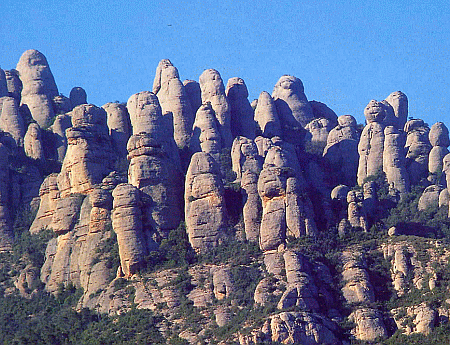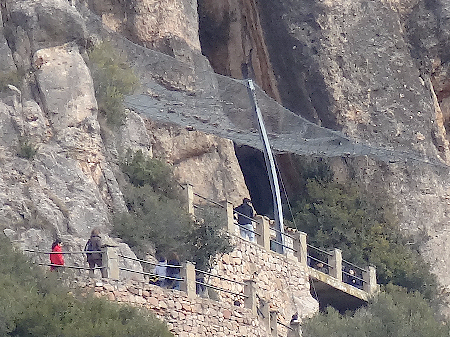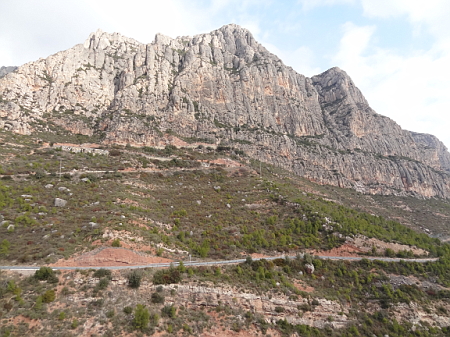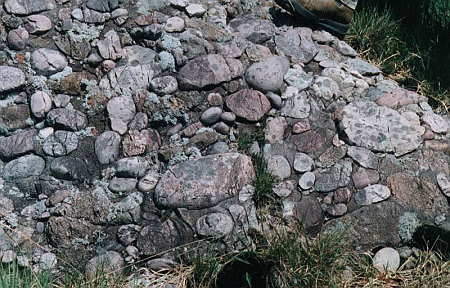Coves del Collbató, Montserrat, Barcelona
Location
The Collbató caves are located in the pre-coastal mountain range on the lower southern slopes of the mountain of Montserrat, west of the river Llobregat. The caves coincide with a progressive unconformity on the north bank of the Torrent de la Salut.
Geological Interest
The Collbató caves are an excellent example of karst scenery located in the iconic Montserrat Natural Park with close proximity to the Barcelona metropolitan area.
Montserrat is one of the Eocene coastal ranges bordering the southern edge of the Ebro basin, being the product of erosion of the Catalan Coastal Ranges. These ranges are small units thrust northward over the Ebro basin, creating progressive unconformities. This deformation occurred during the Alpine orogeny.
There are a series of outcrops in the Collbató area that
clearly show the development of tectonic structures with simultaneous deposition
of alluvial fans on the edge of the basin.
Historical Significance
The area has been inhabited since at least 4000 BC, as shown by Neolithic
remains found in the caves. In the sixteenth century, the monastery received 12
pounds per year from the lease of the caves for the extraction of sodium nitrate
(saltpetre). There are numerous inscriptions inside the cave with dates ranging
from 1511 until 1780.
 |
| Montserrat karst scenery: broadened joints lead to limestone pillar formations |
 |
| Entrance to the caves protected from rock falls by steel mesh. |
 |
| South slope of Montserrat, with the lower level cut by an unconformity |
Source: Albert Martínez Rius, Generalitat de Catalunya Departament de Medi Ambient

